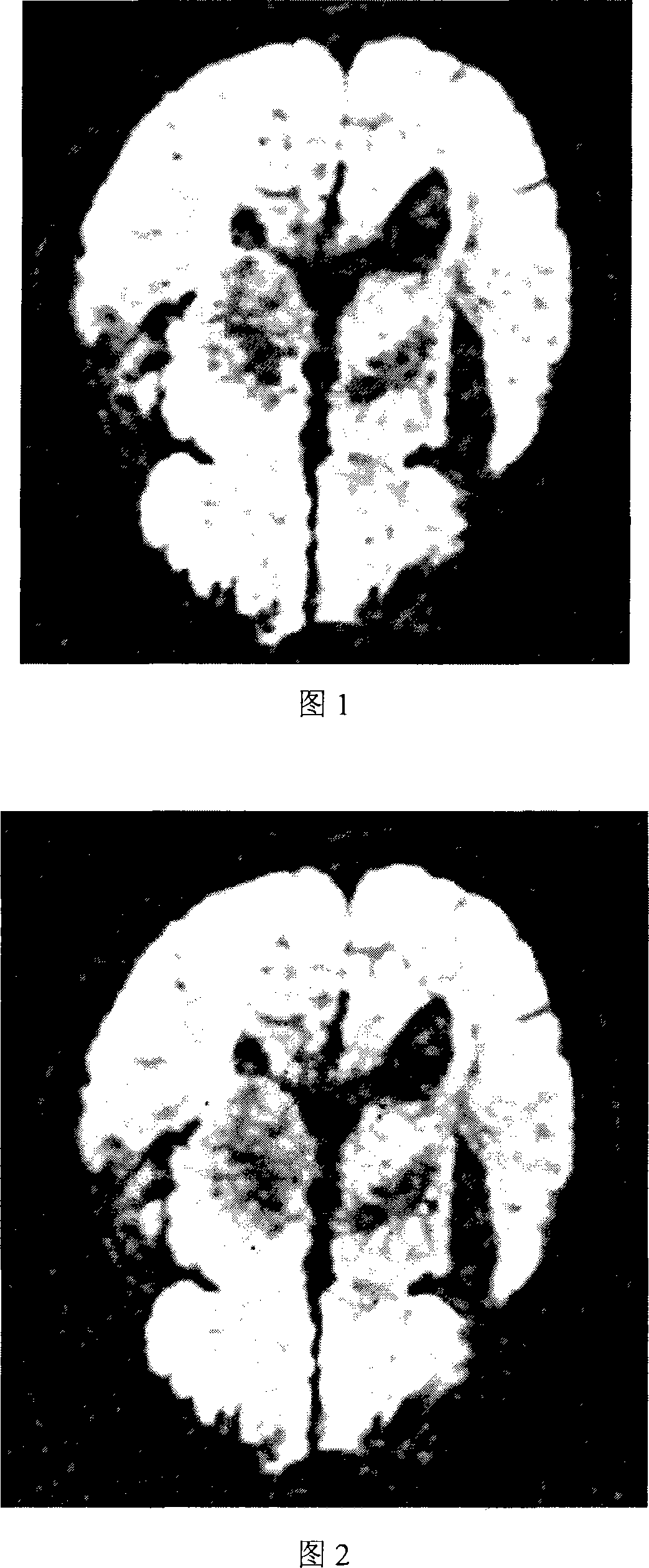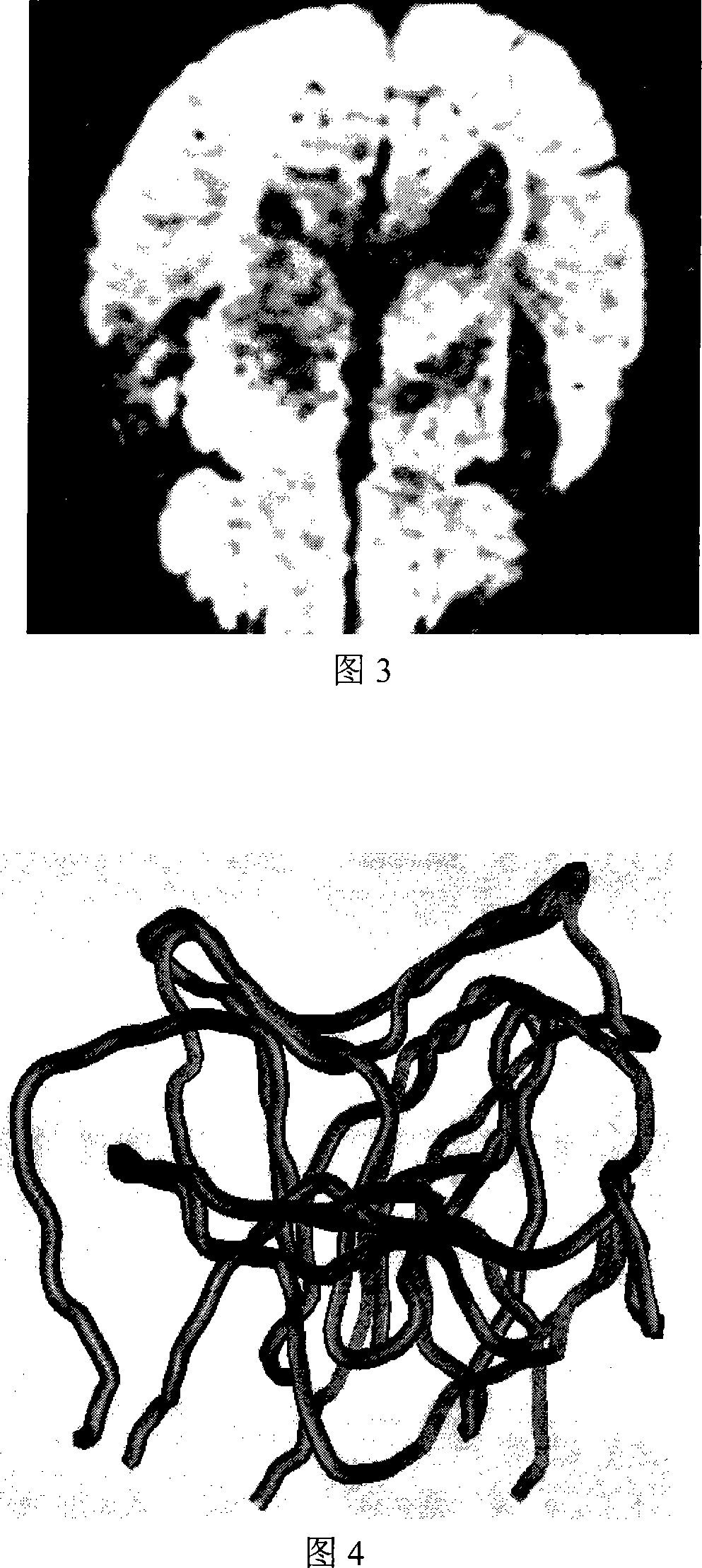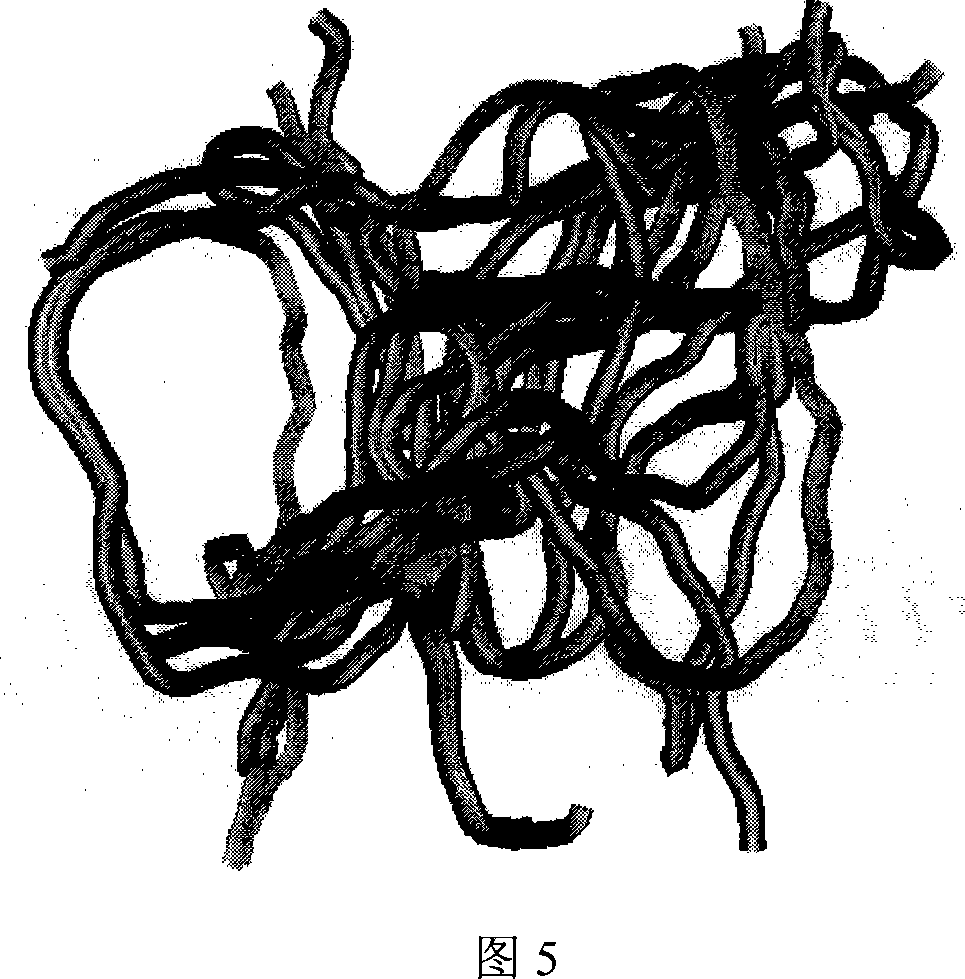Recovery processing method for diffusion tensor magnetic resonance image
A magnetic resonance image, recovery processing technology, applied in the field of medical diagnostic image processing, can solve the problems of useful information loss, element correlation cannot be preserved, etc.
- Summary
- Abstract
- Description
- Claims
- Application Information
AI Technical Summary
Problems solved by technology
Method used
Image
Examples
Embodiment 1
[0120] In this embodiment, the Signa 1.5T magnetic resonance system of GE Company is used to collect DTI images of the human brain first, and then perform restoration processing.
[0121] The images were obtained by DT-MRI imaging of the brain of a healthy adult.
[0122] In this embodiment, we perform weighted imaging with 6 weighted gradients on the human brain, and the imaging voxel is 256×256×45, that is, imaging is divided into 45 layers, and the image size of each layer is 256 mm×256 mm.
[0123] Fig. 1 is the original first gradient-weighted DWI image collected; Fig. 2 is the image after filtering the image information in Fig. 1 using the scalar affine invariant gradient diffusion method; Fig. 3 is the image information in Fig. 1 using this The Fang Ming method is used to restore the processed image.
[0124] Comparing the three figures, it can be seen in Figure 3 that the method of the present invention can remove most of the noise of the original image, so that the cla...
PUM
 Login to View More
Login to View More Abstract
Description
Claims
Application Information
 Login to View More
Login to View More - R&D
- Intellectual Property
- Life Sciences
- Materials
- Tech Scout
- Unparalleled Data Quality
- Higher Quality Content
- 60% Fewer Hallucinations
Browse by: Latest US Patents, China's latest patents, Technical Efficacy Thesaurus, Application Domain, Technology Topic, Popular Technical Reports.
© 2025 PatSnap. All rights reserved.Legal|Privacy policy|Modern Slavery Act Transparency Statement|Sitemap|About US| Contact US: help@patsnap.com



